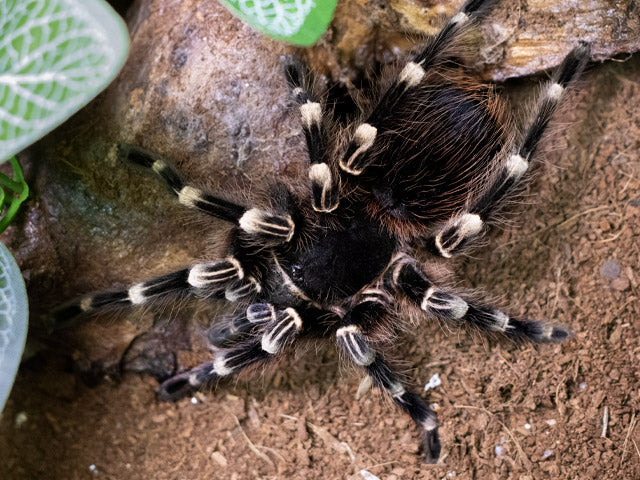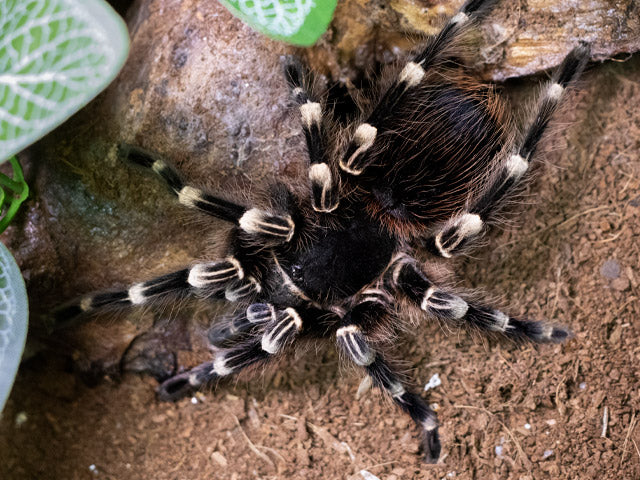Tarantuladen.co.za
Giant White Knee (Acanthoscurria geniculata)
Giant White Knee (Acanthoscurria geniculata)
Low stock: 3 left
Couldn't load pickup availability
If you want a large, striking, and active display tarantula — this is it. Acanthoscurria geniculata is famous for its bold black-and-white leg banding, impressive size, and voracious appetite. It’s one of the most eye-catching terrestrial giants in the hobby — beautiful, hardy, and always ready to eat.
Quick Facts
Common Name: Giant White Knee / Brazilian White Knee
Scientific Name: Acanthoscurria geniculata
Origin: Northern Brazil (Amazon basin region)
Habitat Type: Terrestrial, rainforest floor dweller
Size: 7–8.5 inches (18–22 cm) leg span
Lifespan:
- Females: 15–20 years
- Males: 4–6 years
Temperament: Generally defensive and food-aggressive — not for handling
Coloration
Deep jet-black or chocolate brown body
Brilliant white to cream knee stripes on each leg joint
Long reddish hairs on the abdomen, giving a subtle warm glow
Heavy-bodied and visually imposing
The contrast between the black body and bright leg bands makes it a true display centerpiece.
Housing
Enclosure Type: Terrestrial — large floor space is key
Substrate: 4–5 inches of slightly moist substrate (coco fiber/topsoil mix)
Humidity: 70–80%
Temperature: 75–82°F (24–28°C)
Decor:
- One sturdy hide (cork bark or half log)
- Water dish
- Optional leaf litter or plants for realism
Behavior: Will often remain visible — an active “show spider”
Keep the enclosure well-ventilated and humidity balanced — too wet can cause stress.
Feeding
Diet: Crickets, roaches, locusts, and the occasional mealworm or superworm
Feeding Frequency:
- Slings: 2–3x per week
- Juveniles: Weekly
- Adults: Every 10–14 days
Feeding Style: Extremely food-motivated — expect powerful feeding strikes.
Why Keep One?
Spectacular display species — always visible
Beautiful black-and-white banding
Hardy and fast-growing
Massive size and presence
Fascinating feeding behavior and activity
Notes
Not for handling — can flick urticating hairs or display threat poses
Venom: Mild to moderate but can cause irritation
Fast and defensive during feeding or maintenance
Keep humidity consistent to avoid dehydration in larger specimens
Share


